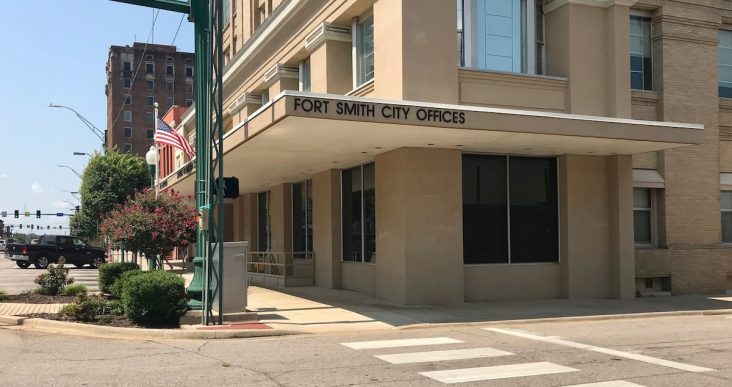Fort Smith Board hears plans on $133 million in capital improvement projects
by October 13, 2020 7:58 pm 1,086 views

Several city department heads presented capital improvement plans to the Fort Smith Board of Directors at a study session Tuesday (Oct. 13) to provide information prior to the city’s process for setting the 2021 budget.
Fort Smith capital improvement plans for streets, bridges and drainage programs, funded by the city’s 1-cent sales tax, total about $133 million over the next five years. The plan calls for $38 million to be spent on projects in 2021.
The proposed plan includes a combination of neighborhood street improvements, major street projects, drainage improvements, and traffic signal/intersection improvements, said Stan Snodgrass, director of engineering.
The city plans to improve eight miles of streets in that plan, Snodgrass said. The estimated cost for the 2021 street overlays and reconstruction projects totals $10.1 million, with an estimated $1.1 million to be spent in 2021 and $9 million in 2022.
Neighborhood drainage projects include improvements in seven areas: Briarcliff Avenue, Yorktown Road, Park Avenue, Edinburgh Drive, Mill Creek Gabions, U.S. Highway 271 and Phoenix Ave. These projects are associated with structure flooding and infrastructure damage that occurred during the heavy rains this past year, Snodgrass said. Total estimated cost for drainage projects is $5 million with $500,000 spent in 2021 and $4.5 million in 2022.
Another item on the capital improvement plan came from a recommendation that came out of a study of a downtown truck routes and traffic. The board of directors passed a resolution in November 2018 that authorized an engineering services agreement with Halff Associates of Little Rock for a Fort Smith Downtown Traffic and Truck Study. The study is based on recommendations from the Propelling Downtown Forward Plan, which was adopted by the board in August 2017 as “a master plan addressing specific development and revitalization issues in the downtown and Central Business Improvement District (CBID) areas,” information on the study states.
Snodgrass said one of the recommendations from study was to rework the center left turn phasing for the traffic signal at the intersection of Fifth Street and Garrison Avenue. For 2021, $100,000 is proposed for this signal modification along with some possible intersection turning radius improvements. There also are plans for replacement of traffic signals at three intersections on Ninth Street, those at Rogers Avenue, North A Street and North B Street. The estimated cost for this is $750,000, Snodgrass said in the report.
Doug Reinert, director of Parks & Recreation, presented the board with a five-year capital improvement plan for the department that includes $22.5 million for project and equipment. These projects are funded by the 1/8-cent sales and use tax dedicated to park improvements that was approved by the citizens in 2012 with a sunset date of October 2022. Should the tax not be renewed and/or not be earmarked for parks, the capital projects identified in the latter part of 2022 through 2025 will not have adequate funding, Reinert said.
Directors voiced concern about the parks department adding new parks in the city when they are not able to maintain what is already in the city’s parks system. Directors noted lawns that were not maintained properly over the summer and parks with equipment in need of replacement.
“We need to maintain what we have rather than adding new parks,” said Director Neal Martin.
Director Lavon Morton said many Fort Smith companies use the city’s parks system as a recruitment tool when hiring, but if the parks are not maintained, the companies will not be able to keep the employees they need. Morton noted that the department needed to make sure its budget provided for enough employees or contract work to make certain the parks were maintained properly.
Matt Meeker, director of streets/traffic control, presented the board with a plan for vehicle and equipment replacement as well as additional purchase of vehicles and equipment. The plan calls for $150,000 for a triple-axle dump truck; $22,500 for a ½ ton pickup; $36,000 for a ¾ ton truck with utility bed; $49,000 for a 1 ton flatbed dump truck; $90,000 for a 2 ton aerial bucket truck; $40,000 for an all-terrain detention pond mower.
Kyle Foreman, director of solid waste services, presented the board with a capital improvement plan that would need about $41.81 million over the next 10 years. That plan includes truck purchases, landfill development costs and other capital improvement items. Landfill development would include development of Phase A-6 at $3.415 million to be spread over 2021 and 2022; development of the northwest slope and top deck at the landfill at $12.25 million in 2026; and Phase B development at $5.12 million in 2026.
